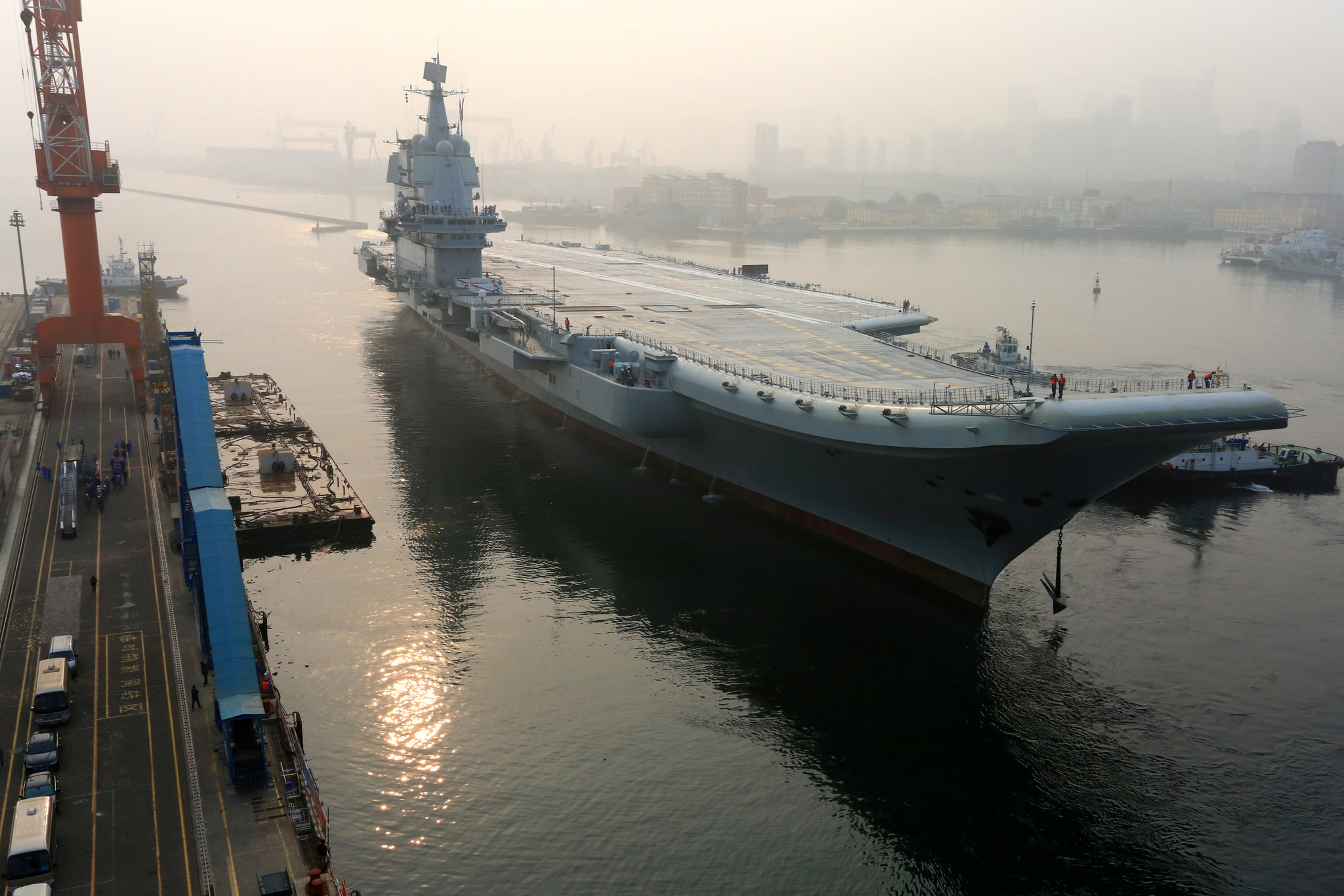China Launches Its First Domestically Made Aircraft Carrier

TAIPEI, Taiwan — China launched its first domestically built aircraft carrier to begin sea trials on Sunday, reaching another milestone in the expansion of the country’s navy.
The aircraft carrier, as yet unnamed, left its berth at a shipyard in the northeastern port of Dalian after a blow of its horn and a display of fireworks, according to reports in state news media.
The Chinese Navy — officially the People’s Liberation Army Navy — already has one operational carrier, the Liaoning, which it bought unfinished from Ukraine after the collapse of the Soviet Union. That ship joined the Chinese fleet in 2012 and began its first operations four years later, putting China in the small group of seafaring powers that maintain aircraft carriers, led by the United States, which has 10 Nimitz-class carriers alone.
The Liaoning, which appears to serve as a training vessel as much as a combat ship, was the centerpiece of a naval parade of 48 ships attended last month by China’s leader, Xi Jinping. The following week, it led a carrier battle group in live-fire exercises in the Taiwan Strait and in the East China SeaSince taking office, Mr. Xi has driven an ambitious effort to modernize the country’s military, reducing the traditional focus on readying the ground forces of the People’s Liberation Army to defend against an invasion of the mainland and increasing the emphasis on technology-dependent naval, air and missile forces.
The new carrier, built by the Dalian Shipbuilding Industry Company, has a similar design to the Liaoning but has been modified and expanded, according to Chinese and foreign experts.
The Global Times, a Chinese newspaper, published a side-by-side comparison showing that the new carrier was slightly longer and wider, and saying that it would be able to carry 32 to 36 J-15 fighter jets, compared to 24 aboard the Liaoning.
Both displace 50,000 tons, compared to the newest American carrier, the Gerald R. Ford, which displaces twice that and can carry 75 aircraft. Unlike the nuclear-powered American carriers, the two Chinese ships use conventionally powered engines, limiting their range and ability to stay at sea.
The second carrier’s sea trials have long been expected, but the ship appeared to have encountered some delays. A flurry of reports in April suggested its trials were about to begin — only for the ship to remain at its berth in Dalian’s harbor.
“When there is good news about the next step, we will announce it first thing,” the defense ministry’s spokesman, Senior Col. Wu Qian, said at a news conference a few days later.
It remains unclear when the second carrier will be commissioned and officially become the fleet’s new flagship. Initial reports suggested it would be ready this year, but The Global Times reported on Sunday that it might not be ready until 2020.